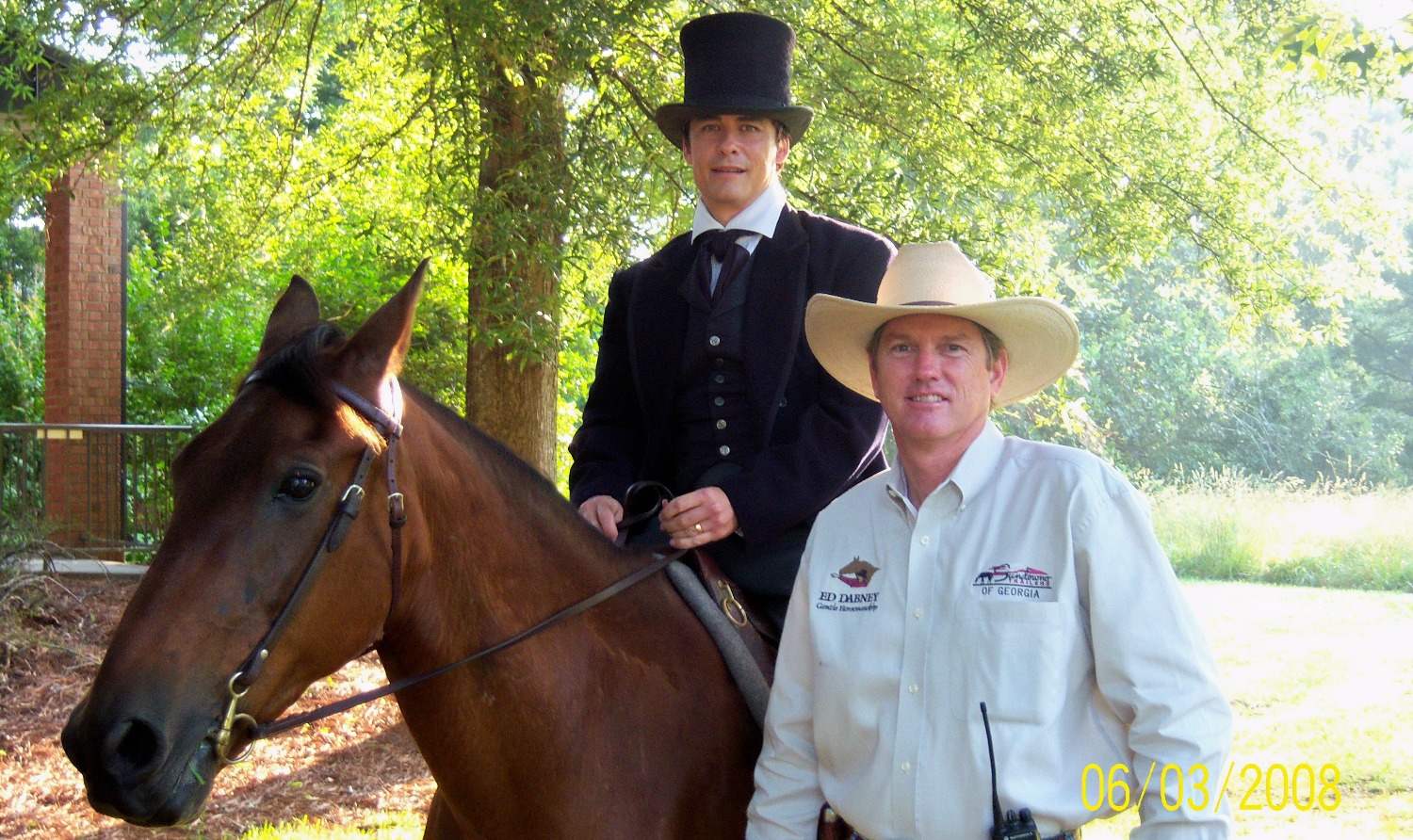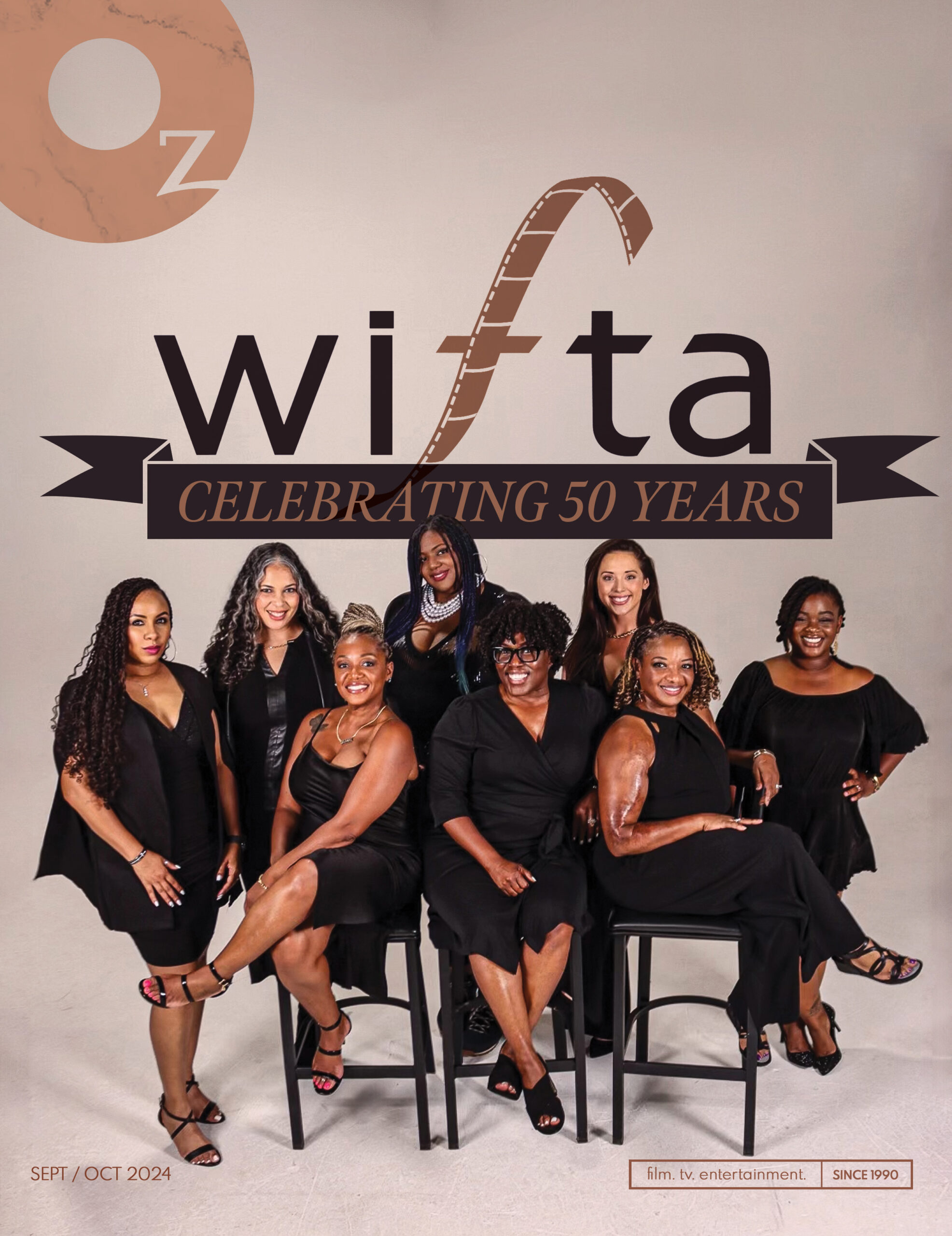
Getting Your Animal in Front of the Camera

(Greg Tresan with Lion & Bright from The Originals)
The explosion of television and film productions in Georgia and the Southeast means there’s more work for talent now than ever before. And not just talent of the human kind. Animal actors, trainers, and wranglers are in demand, but getting booked for a production is not as simple as having adorable dogs or beautiful horses.
Is Fido Ready for His Close-Up?
Production companies need wranglers who work with trained animals. Many trainers and wranglers have their own animals, whether it’s dogs, horses, birds or even more exotic animals. But there are ways to break into the business if you have an exceptional animal.
“We scout for animals,” says Greg Tresan, a professional animal trainer and animal coordinator for Animal Casting Atlanta, based in Ball Ground, Georgia. Tresan has more than 30 years of experience training dogs, and his wife, Carol Tresan, is an equestrian expert who competes nationally in several equestrian disciplines. The Tresans have worked with all five seasons of AMC’s The Walking Dead and have provided animals for The Hunger Games: Mockingjay 1 and 2.
Tresan says that when a production company calls for animal talent, he analyzes what the animal will be tasked to do. He often has to search for a specific breed, and that’s where his scouting expeditions come into play. He goes to dog shows and other competitive events to find animals that will fill the bill for a specific part. “If an animal is well trained, we take them the rest of the way.”
That’s also the philosophy of Renee deRossett of AnimalsOnSet.com, who operates out of Savannah. She is always on the lookout for trained dogs and maintains a database of thousands of contacts. She also goes to events, including animal fundraisers, where people are out with their pets. “I’ll even stop people on the street and ask if I can take a picture of their dog,” she says. She’ll then ask the owners to email her other photos and specifics about the animal. “Mainly when I need an animal, I’ll ask the owner, ‘Can your dog sit and stay and wait for a break command?’”
But it can be tough work for an animal, notes Joan Lask, owner of Jo-Thor’s Dog Trainers’ Academy in Alpharetta. “It’s not that glorious having your dog in a film.” Dogs need to be off-leash trained and be able to maintain a down-stay and a sit-stay for extended periods. During filming, you can’t give verbal commands to the animal so they also need to understand hand signals.
She echoes Tresan’s advice: “If people really want to get into film, give me a call and let’s get that dog trained.”
It’s All about Preparation
Once you and your animal get a good reputation with production companies, more work will likely come your way, says Ed Dabney, owner of Ed Dabney Gentle Horsemanship out of Monroe, Georgia. “I want to be easy to get along with,” he explains. “I don’t want to be demanding. I want to work things out.” For Dabney, that starts with fully committing to the production and doing everything possible to have the horses ready for the daily demands of filming. “Do your homework, and study the scenes,” he recommends.

(Ed Dabney with Freddy on Penny from Sleepy Hollow)
“The more prepared you can be, the more [production] likes you…”
-Ed Dabney
He is currently working as the head wrangler for the Fox TV series Sleepy Hollow. The series often has battle scenes, and he desensitizes his horses by training them with firecrackers to simulate the noise from a battle scene. He also brings the gear for his horses, selecting authentic saddles for the period. In Sleepy Hollow, many of the battle scenes are set in the time of America’s Revolution. “The more prepared you can be, the more [production] likes you,” he points out.
He also comes ready if one of the lead actors will be on horseback for extended periods of time. “I was on a set and previous wrangler would say, ‘We can run this five times and that’s it. I’m taking the horses away.’” So Dabney brings two horses that could be used by the actor. “You switch out the other horse. You work things out on your end.”
Tommie Turvey, a horse trainer and equestrian performer, echoes Dabney’s philosophy. “You have to be really good at what you do. The business is not one where a horse enthusiast with one or two animals can start booking jobs. It is a much more complex endeavor.” Turvey, who has a training facility in Summerville, Georgia, has been working with horses since he was a child, when he would ride green horses bareback in auction rings. He graduated to riding in live shows, and throughout it all, he learned the intricacies of training horses from some of the best in the business.
He points out that a horse can be well trained, but what they master in a familiar environment can be difficult to duplicate when they are surrounded by cameras and lighting crews. “Animals need to be trained for anything,” he says. “If you get hired to do something, you better be able to do it.” Each production has its own needs, so after reading the script, Turvey begins to parse out the particulars of the job. “Does the animal need training with a smoke machine? Will it be walking on concrete or is there a railroad track?”
“You may be a really good horse trainer, but you need to learn the industry,” Turvey recommends. An internship with a trainer who does production work is a great place to start. Turvey offers 90-day programs at his facility. But even after that, you still have to hustle to get the jobs. “I know guys at 80 who are still hustling in this business!”






